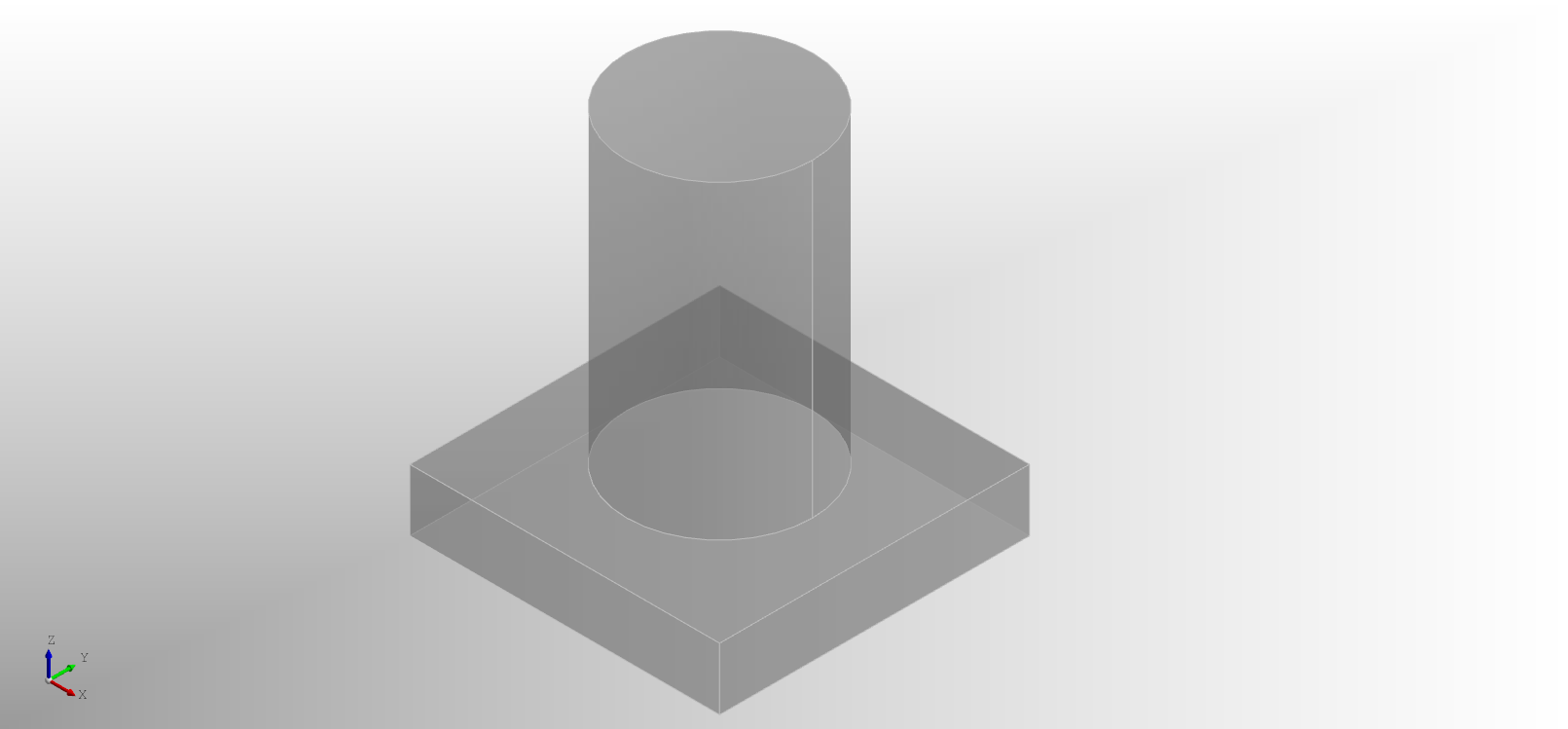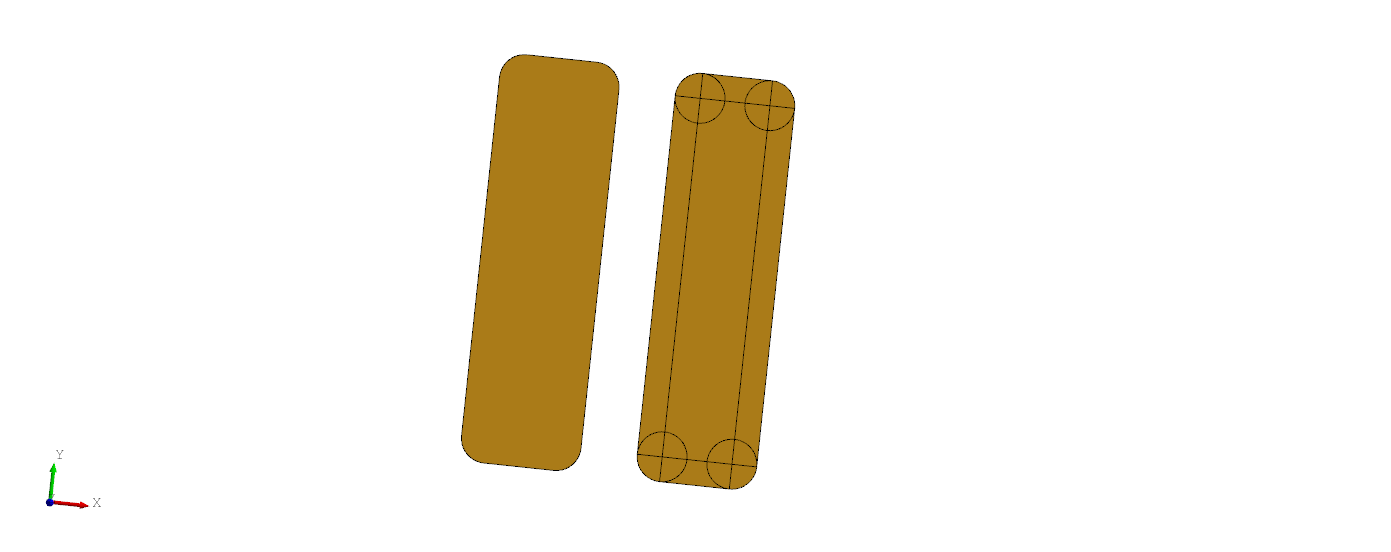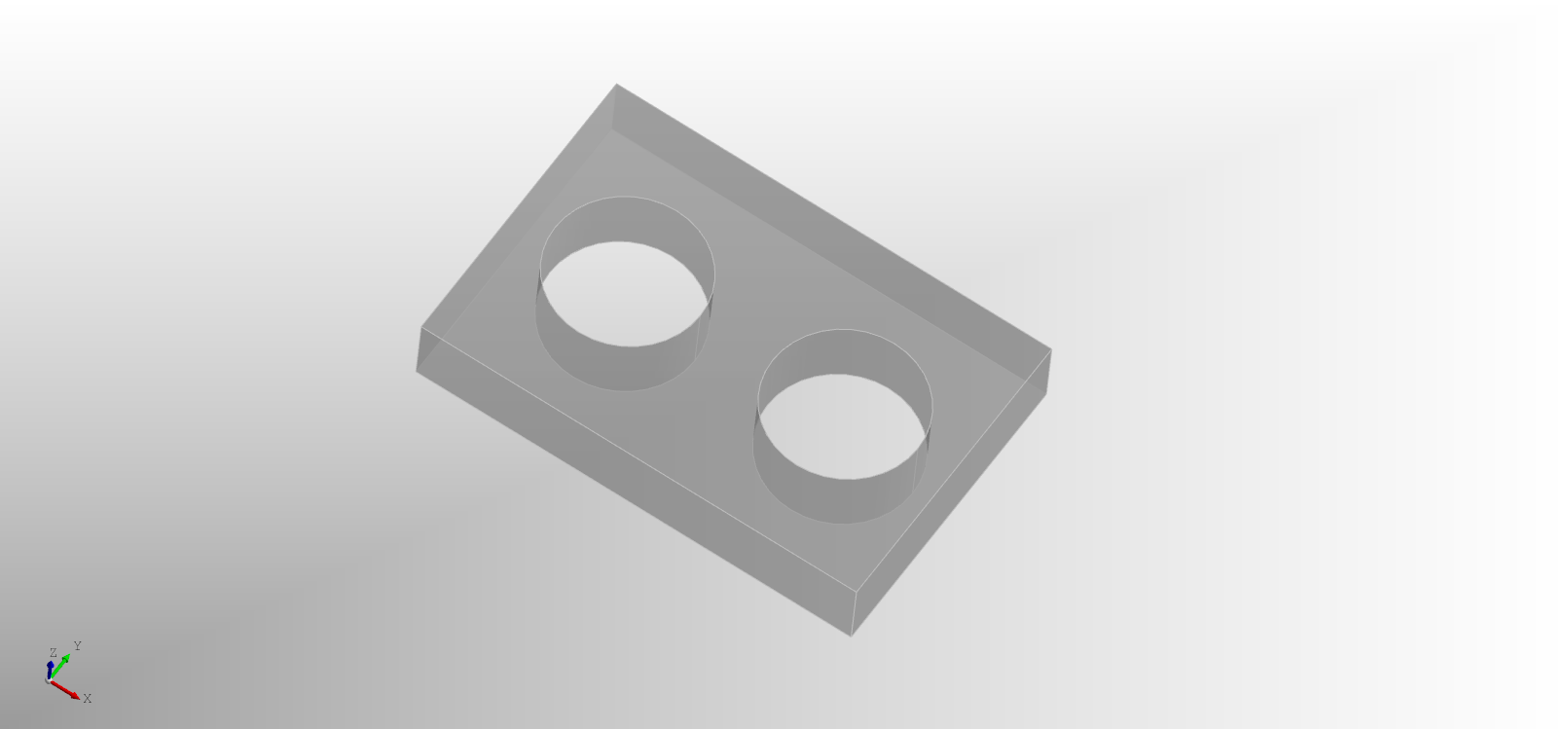DeclaraCAD has Fuse, Cut, and Common boolean operations.
Note: Use
parallel = Trueto run the operation in parallel. Usedisabled = Trueto quickly disable the operation and make the result the first shape.
Fuse
The Fuse declaration performs a boolean add or union of two shapes. The resulting shape will be both parts fused together as if welded, casted, or printed as one piece. Fuse will join all child declarations so multiple shapes can be fused together with one Fuse block.

enamldef Assembly(Part):
Fuse:
transparency = 0.5
material = 'plastic'
color = 'grey'
Box:
position = (-dx/2, -dy/2)
dx = 5
dy = 5
dz = 1
Cylinder:
position = (0, 0, 1)
radius = 1.5
height = 5
Note: When performing a union of planar faces OCCT will keep each original face intact. You can set the
unify = Trueto join all of the faces into a single face as shown below (on the left).

Cut
The Cut performs a subtraction of the all subsequent shapes from the first shape. The resulting shape will be the first shape with all other intersecting parts of the other shapes removed.

enamldef Assembly(Part):
Cut:
transparency = 0.5
material = 'plastic'
color = 'grey'
Box: box:
position = (-dx/2, -dy/2)
dx = 6
dy = 4
dz = 1
Cylinder:
position = (1.5, 0)
radius = 1
height = box.dz
Cylinder:
position = (-1.5, 0)
radius = 1
radius = 1
height = box.dz
Common
The Common performs an intersection of all of the shapes. The resulting shape will be only parts which are common to all of the items.

enamldef Assembly(Part):
Common:
transparency = 0.5
material = 'plastic'
color = 'grey'
Cylinder:
position = (0, 0)
radius = 5
height = 1
Box:
position = (-dx/2, -dy/2)
dx = 10
dy = 8
dz = 1
Any combination of these operations can be nested together as needed to create more complex parts. As an example here's one way to model a simplified ball screw nut.

enamldef BallScrewNut(Part): part:
attr d = 16
attr length = 42
material = 'steel'
color = '#555'
attr show_bolts: bool = True
func get_bolt_holes():
r = 38/2
a = radians(45)
angles = [
radians(0), radians(45), radians(-45),
radians(180), radians(180+45), radians(180-45)
]
return [(r*cos(a), 0, r*sin(a)) for a in angles]
Chamfer:
material = part.material
color = part.color
distance = 0.5
Cut:
Fuse:
Cylinder: c2:
direction = (0, 1, 0)
radius = 28/2
height = length
# Bracket
Common:
Cylinder: c1:
direction = (0, 1, 0)
radius = 48/2
height = 10
Box:
position = (-dx/2, 0, -dz/2)
dy = 10
dz = 40
dx = c1.radius*2
Cylinder:
direction = (0, 1, 0)
height = c2.height
radius = d/2
Looper:
iterable = get_bolt_holes()
Cylinder:
position = loop.item
direction = (0, 1, 0)
radius = 6/2
height = 10
Looper:
iterable = get_bolt_holes() if show_bolts else []
CounterSunkHex:
direction = (0, 1, 0)
diameter = 7
length = 20
material = 'charcoal'
position = Point(0, 1.75, 0) + loop.item
